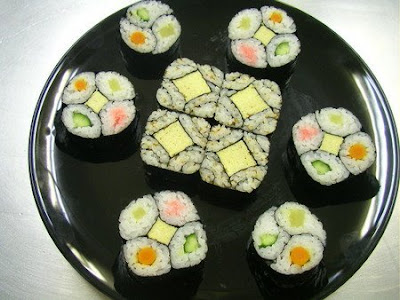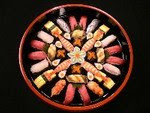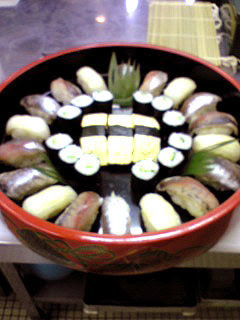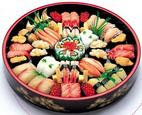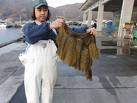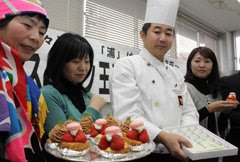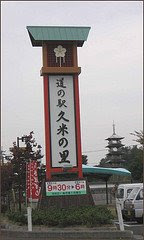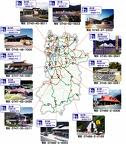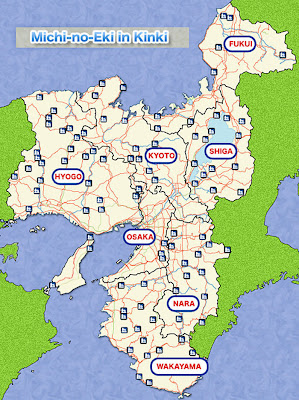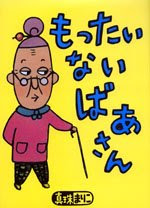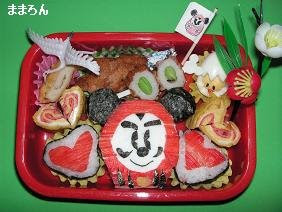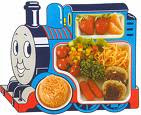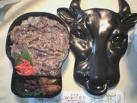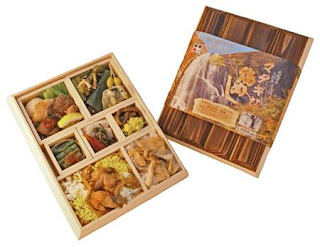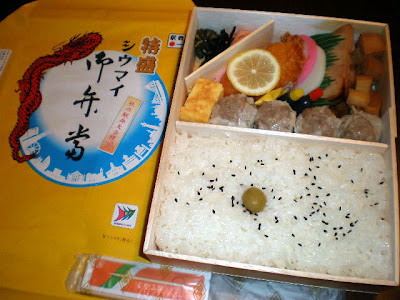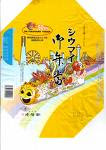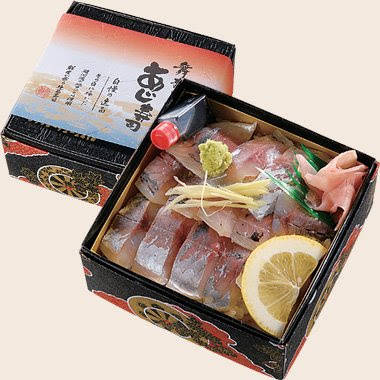[ . BACK to WORLDKIGO TOP . ]
::::::::::::::::::::::::::::::::::::::::::::::::::::::::::::::::::::::::::::::::::::::::::::::::::::
Shark (same)
***** Location: Japan
***** Season: All Winter
***** Category: Animal
*****************************
Explanation
same 鮫 (さめ) shark
superorder Selachimorpha
..... fuka 鱶(ふか)
.....
wani わに(鰐) (this means also "crocodile")

"blue shark", yoshikirizame 葭切鮫, 葦切鮫(よしきりざめ/ ヨシキリザメ)
Prionace glauca
its fins are used for sharks fin soup
aozame 青鮫(あおざめ) blue shark
"star shark", spotted smooth-hound shark, hoshizame 星鮫(ほしざめ)
"tiger shark", torazame 虎鮫(とらざめ)
"cat shark", bullhead shark, nekozame 猫鮫(ねこざめ)
"saw shark", spurdog shark, nokogirizame 鋸鮫(のこぎりざめ)
"bell hammer shark" , shumokuzame 撞木鮫(しゅもくざめ)
"butterflyl shark" 蝶鮫 choozame
and many more shark types.
mookazame モウカザメ(毛鹿鮫), mafukazame マフカザメ(真鱶鮫)
often fished in Northern Japan, Kesenuma
Haifisch
kobanzame. Kleiner Haifisch, Echeneis nauctates
Blauhai, aozame, Isurus oxyrynchus
Makrelenhai nezumizame, Lamna ditropis
Makohai, Isurus oxyrinchus
Weißer Hai, Carcharhodon carcharias
:::::::::::::::::::::::::::::::::::::::::::::::::::::::::::::::::::::::::::::::::::::::::::::::::::
Sharks (superorder Selachimorpha)
are a type of fish with a full cartilaginous skeleton and a highly streamlined body.
The bull shark, Carcharhinus leucas, is the best known of several species that swim in both seawater and freshwater, as well as in deltas.
Sharks in mythology
Sharks figure prominently in the Hawaiian mythology. There are stories of shark men who have shark jaws on their back. They could change form between shark and human at any time they desired. A common theme in the stories was that the shark men would warn beach-goers that sharks were in the waters. The beach-goers would laugh and ignore the warnings and go swimming, subsequently being eaten by the same shark man who warned them not to enter the water.
( more )
In other Pacific Ocean cultures, Dakuwanga was a shark god who was the eater of lost souls.
© More in the WIKIPEDIA !
::::::::::::::::::::::::::::::::::::::::::::::::::::::::::::::::::::::::::::::::::::::::::::::::::::
Most sharks are seen at the fish market of
Kesennuma in Miyagi prefecture. There they are also called aonogi アオナギ.
There are more than 250 different kinds. In the waters around Japan we have about 150 varieties, ウバザメ・オナガザメ・ツノザメ・ノコギリザメ.
ニシネズミザメ Lamna nasus
. Regional Dishes from Miyagi .
yoshikirizame, Prionace glauca(葦切鮫) is used for the shark fin soup. This fish belongs to the Carcharhinidae group.
It becomes about 3,8 meters long, weights 200 kg and prefers warm waters.
The longest sighted was 6 meters. They feed on fish and squid.
The male grow up in southern waters, whereas the female grow in northern waters. When they are grown up, the females swim down to meet the males and stay there.
Their meat is produced to kamaboko. The fins end up in soup. Fins from the back and the tail of large species are used. They are dried before use.
The collagen from their cartilages is also produced into medicine.
shark meat soon tends to smell of amonium when it is exposed to air. Therefore it has to be boiled, the skin taken off, the fat removes as much as possible and the cartilage dried in the sun.
WASHOKU
samegawa 鮫皮 shark's skin to grate wasabi
:::::::::::::::::::::::::::::::::::::::::::::::::::::::::::::::::::::::::::::::::::::::::::::::::::
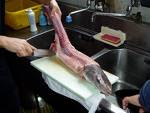 Shark dishes 鮫料理 same ryoori
shark fin soup 鱶鰭スープ fukahire suupu
Shark dishes 鮫料理 same ryoori
shark fin soup 鱶鰭スープ fukahire suupu

Shark fin soup (or shark's fin soup)
is a delicacy that has been a popular item of Chinese cuisine since the Ming Dynasty, usually served at special occasions such as weddings and banquets. As a luxury item, the dish is also considered a symbol of wealth and prestige in Chinese culture. The "finning" of sharks required to make this soup has become highly controversial in recent years, because consumption has grown dramatically as some sectors of Chinese society become more affluent. Some have called the practice brutal, and it is also named as a primary contributing factor in the global decline of many shark species.
Hong Kong handles at least 50% and possibly up to 80% of the world trade in shark fin, with the major suppliers being Europe, Taiwan, Indonesia, Singapore, United Arab Emirates, United States, Yemen, India, Japan, and Mexico.
Genuine shark fin soup or stew is made with shark fins obtained from any of a variety of shark species. Raw shark fins are processed by first removing the skin, trimming them to shape, and thoroughly drying them. They may be bleached with hydrogen peroxide before drying to make their colour more appealing. Shark fins are the cartilaginous pectoral and dorsal fins of a shark. Sharks' fins are sold in two forms: frozen and dried. Both need to be softened before they can be used to prepare soup. The frozen form is ready to use as it has been prepared and therefore only requires about an hour of soaking.
There are two types of the dried form, skinned (shredded) and whole, which require more preparation.
© More in the WIKIPEDIA !
For a good soup leek and ginger are added to the boil. The soup gets a gelatine-like finish.
:::::::::::::::::::::::::::::::::::::::::::::::::::::::::::::::::::::::::::::::::::::::::::::::::::::
 samenobori サメのぼり shark hanging out to dry
samenobori サメのぼり shark hanging out to dry
prepared in Nagasaki for New Year dishes
長崎県雲仙市 Unzen Town
They are named after the carp nobori flags for the Boy's festival in May.
:::::::::::::::::::::::::::::::::::::::::::::::::::::::::::::::::::::::::::::::::::::::::::::::::::::
kansame 鮫干 dried sharkfin or sharkmeat
same raamen 鮫ラーメン ramen noodle soup
same no sashimi さめ刺身 Shark Sashimi
. . . CLICK here for Photos !
same no sugatani 青鮫ふかひれ姿煮 whole boiled sharkfin
. . . CLICK here for Photos !
same no sushi サメのお寿司 sushi with shark meat
. . . CLICK here for Photos !
samenotare サメのタレ dried shark meat

Im Hafen Katsu-ura der Präfektur Wakayama wird ebenfalls viel Haifisch angelandet und zu Trockenfisch verarbeitet. In den Städten Ise und Toba der Präfektur Mie wird getrocknetes Haifischfleisch gegessen; dabei wird das Fleisch in rechteckige Stücke geschnitten und vor dem Trocknen entweder mit Salz mariniert oder seit der Showa-Zeit auch mit Mirin mariniert. Das Fertigprodukt sieht also nicht mehr wie ein Fisch aus. Die Stücke werden vor dem Essen kurz über Holzkohlen gegrillt und zusammen mit weißem Reis gegessen.
- - -
- - - Haifisch und Haifischflossen - - -
Weltweit wird der meiste Haifisch in Hongkong umgesetzt, in Japan hat der Hafen Kesennuma den größten Umsatz an Haifisch und Haifischflossen. An zweiter Stelle liegt der Hafen von Hachinohe in der Präfektur Aomori, gefolgt von Chōshi in der Präfektur Chiba und Nagasaki auf Kyushu.
Ende Dezember findet im Hafen von Kesennuma die »Woche der Haifischflossen« statt, bei der besondere Menüs mit dieser Delikatesse angeboten werden. Nicht nur die berühmte Suppe, auch andere Gerichte werden in Kesennuma daraus zubereitet. Dazu gehören unter anderem Ramen-Nudelsuppe, Sushi oder Sugatani, eine Zubereitungsart, bei der das Haifleisch unter Beibehaltung der ursprünglichen Form gekocht wird. Frische Haifischflossen dienen auch als Belag auf dem handgeformten Nigiri-zushi.
Haifischflossensuppe zählt seit Ende des 14. Jahrhunderts zum festen Speiseplan der chinesischen Küche und wird bei besonders festlichen Anlässen serviert. Haifischflossen symbolisieren bis heute Reichtum und Prestige in der Gesellschaft. Zudem soll die nahrhafte Suppe mit ihrem hohen Kollagengehalt zur Erhaltung der Gesundheit beitragen. Weil das Fleisch von Haifischen kalorien- und fettarm ist und zudem über einen hohen Eiweißanteil verfügt, ist es besonders für Kinder und Senioren geeignet. Im Rahmen der chinesischen Heilkunde (kanpō) werden Kollagen, Knorpel und Leber zu verschiedenen Medikamenten verarbeitet.
Chinarestaurants in Japan bieten Haifischflosse zu jeder Jahreszeit an und für Eilige stehen Instantsuppen oder Konserven dieser Delikatesse bereit.
Länger gelagertes Haifischfleisch nimmt sehr schnell den Geschmack von Ammoniak an. Aus diesem Grund war es vor der Verbreitung von modernen Kühlmethoden im bergigen japanischen Landesinneren kaum bekannt. Mit Ausnahme der Bergregion in Westjapan. Dort wurde in den Wintermonaten frisches Haifischfleisch als Sashimi oder als Haifisch-Frikadelle angeboten. Entlang der "Silberstraße" wurde der Fisch von den Häfen am Japanischen Meer transportiert. Dieser Transportweg zwischen der Küste und den Bergen, dem die angrenzenden Silberminen seinen Namen gaben, war relativ gut ausgebaut, sodass die Händler mit ihrer verderblichen Ware zügig vorankamen. In den Berggebieten wird das Haifischfleisch in den Speisen häufig "
Krokodilgericht" (wani ryōri) genannt.
Das Fleisch junger Fische aus modernen Aquakulturen hat einen nicht so starken Ammoniakgeruch und schmeckt milder. Dennoch werden die Haifischflossen selten frisch und roh angeboten. Meist wird die Flosse zunächst enthäutet und das Fett entfernt, dann gekocht und sonnengetrocknet. Vor der weiteren Verarbeitung wird das Fleisch in Wasser eingeweicht. Im Handel sind auch tiefgefrorene Stücke erhältlich, die nach kurzer Auftauzeit verwendet werden können.
- - - Haifische um Japan - - -
Bereits in den Überresten prähistorischer Siedlungen in Aomori aus der Jungsteinzeit (Jōmon-Zeit, ca. 5000–300 v. Chr.) fanden sich Knochen von Haifischen, insbesondere der Arten Dornhai (aburatsunozame) und "Sternen-Haifisch" (hoshizame).
Die kulturelle Bedeutung von Haifischfleisch für die Japaner belegt, dass seit jeher am großen Schrein von Ise, dem höchsten Shinto-Heiligtum, getrocknetes Haifischfleisch zu den Opfergaben für die Gottheiten gehört.
Es gibt mehr als 250 Haifischarten unterschiedlichster Größen in den Weltmeeren. In den japanischen Gewässern wurden bis zu 150 Arten gezählt. Die Rückenflossen und die Schwanzflosse der Blauhaie werden am häufigsten verarbeitet. Der Yoshikirizame-Blauhai wird bis zu vier Meter lang und wiegt bis zu 200 Kilogramm. Die männlichen Fische leben in südlichen Gewässern um Japan, die weiblichen ziehen nach Norden und kehren erst wieder zurück, wenn sie ausgewachsen sind.
In zoologischen Aquarien sind Haifische beliebte Ausstellungstiere. Kinder und Eltern können den scharfen Kiefern hier gefahrlos nahe kommen. Das große Aquarium im Sea Paradise auf der Insel Hakkeijima vor Yokohama hat sogar ein Grabmal für Haifische angelegt, das einmal jährlich von einem buddhistischen Priester besucht wird, der für die Seelen der im Aquarium verstorbenen Tiere betet.
:::::::::::::::::::::::::::::::::::::::::::::::::::::::::::::::::::::::::::::::::::::::::::::::::::::
jinkoo fukahire 人工ふかひれ artificial shark fin
made of pork gelatine and other gelatine, to be used for soups
It has the flavoring of the real thing.
Since real shark fin is becoming more and more expensive, companies try to make this new ones, which are a lot cheaper.
. . . CLICK here for Photos !
- quote
Shark's fin are popular and luxury materials of Chinese cuisine. In the 17th century, they were frequently exported from Nagasaki, Japan to China as one of the popular dried products. Since then, they have become a major export good of Japan to China. Today, with its high-standard processing techniques, Japan is the leading producer of top-quality artificial shark's fin, which enjoy a good reputation in the Chinese food industry around the world.
Sharks are landed as incidental fish in long-line tuna fishing. However, the recent supply of sharks comes to be insufficient due to the decrease in numbers of long-line fishing ships, fishing control sanctions, and a shortage of sharks. As a result, the market faces imbalance of demand and supply, and the price of shark's fin soars tremendously. Under these circumstances, Ritsurin Bussan has developed the new products - dried and frozen artificial shark's fin, which are quite similar to natural shark's fin in both taste and appearance. Artificial shark's fin have already been penetrated the domestic and international market as a suitable substitute for natural shark's fin, and their production are increasing year by year.
The price of shark's fin, which rose at the end of last year (2000), has risen again by 20 to 50 % in June due to the shortage of sharks. Dealers say "shark's fin are luxury food whose high price has made it quite unpalatable merchandise." That is the reason why artificial shark's fin have been invented and marketed to meet the need. On account of their good taste and lower price, the fins win great popularity in the market.
Artificial shark's fin offers as great taste as the natural fins. They are very cost-effective so that Chinese food material manufacturers, distributors and Chinese restaurants can offer Chinese cuisine with shark's fin at a reasonable price. Both dried and frozen,Heatproof artificial shark's fin are available for different purposes.
Characteristics of Artificial shark's fin
Chewing feel just like the natural shark's fin
Color, thickness and taste relatively similar to the natural shark's fin
Consistent supply at a reasonable price
Suitable for many kinds of cuisine
Easy to cook and superior storage
Enable you to create value-added dishes (for egg dishes, hot-pot dishes, salad, pasta, etc.)
source : www.shark-fin.net . Ritsurin Bussan
*****************************
Worldwide use
Malaysia
. “Bujang Senang”man-eating crocodile .
*****************************
Things found on the way
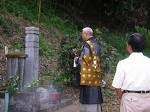 samezuka 鮫塚 memorial stone for sharks
samezuka 鮫塚 memorial stone for sharks
to pray for the sould of the animals that died at the aquarium.
YOKOHAMA HAKKEIJIMA SEA PARADISE
is a leisure land surrounded by nature. It is located at the tip of Yokohama Bay and is a new generation style amusement park. It is the home of one of the top aquariums in Japan.
source : www.seaparadise.co.jp
中乃島水族館, シーパラダイス
::::::::::::::::::::::::::::::::::::::::::::::::::::::::::::::::::::::::::::::::::::::::::::::::::::
Shark and Crocodile, same and wani
reading the legend of
YamaSachiHiko and UmiSachiHiko
A similar legend about a young man from the sea who lost the hook of his elder (father/brother) and lived with a princess who later turned into a crocodile (wani) and about 8 islands created by the gods is found in the island of Malaita in the Solomon Islands.
There might be a common origin of some mongoloid tribes that moved from a lost paradise called
Sundaland (near the Malay peninsula) to the south and north ... and met at some time again in Japan.
Malaita (Auki)
WASHOKU : Umi no sachi
The legend of Lemuria and sunken Sundaland.
The legend of the sunken continent of Atlantis.
Sundaland
is a biogeographical region of Southeastern Asia that comprises the Maritime Southeast Asia islands of Sumatra, Java, Borneo, and surrounding smaller islands. The eastern boundary of Sundaland is the Wallace Line, identified by Alfred Russel Wallace, which marks the eastern boundary of the Asia's land mammal fauna, and is the boundary of the Indomalaya and Australasia ecozones. The islands east of the Wallace line are known as Wallacea, and are considered part of Australasia.
© More in the WIKIPEDIA !
*****************************
HAIKU
ふなびとら鮫など雪にかき下ろす
funabito ra same nado yuki ni kakiorosu
these fishermen
they just rake the shark down
into the snow
加藤楸邨 Katoo Shuuson, Kato Shuson (1905 - 1993)
:::::::::::::::::::::::::::::::::::::::::::::::::::::::::::::::::::::::::::::::::::::::::::::::::::::
鮫船の腹に魚群れ潮澄めり
samebune no hara ni sakana mure shiosumeri
水原秋桜子 Mizuhara Shuuooshi, Mizuhara Shuoshi (1892 - 1981)
:::::::::::::::::::::::::::::::::::::::::::::::::::::::::::::::::::::::::::::::::::::::::::::::::::::
Sharp teeth deadly strong
Like a drunk Australian
Chasing a female
source : "nineteen to the dozen"
*****************************
Related words
*****
WASHOKU : FISH and SEAFOOD SAIJIKI
WASHOKU : Regional Japanese Dishes
:::::::::::::::::::::::::::::::::::::::::::::::::::::::::::::::::::::::::::::::::::::::::::::::::::
